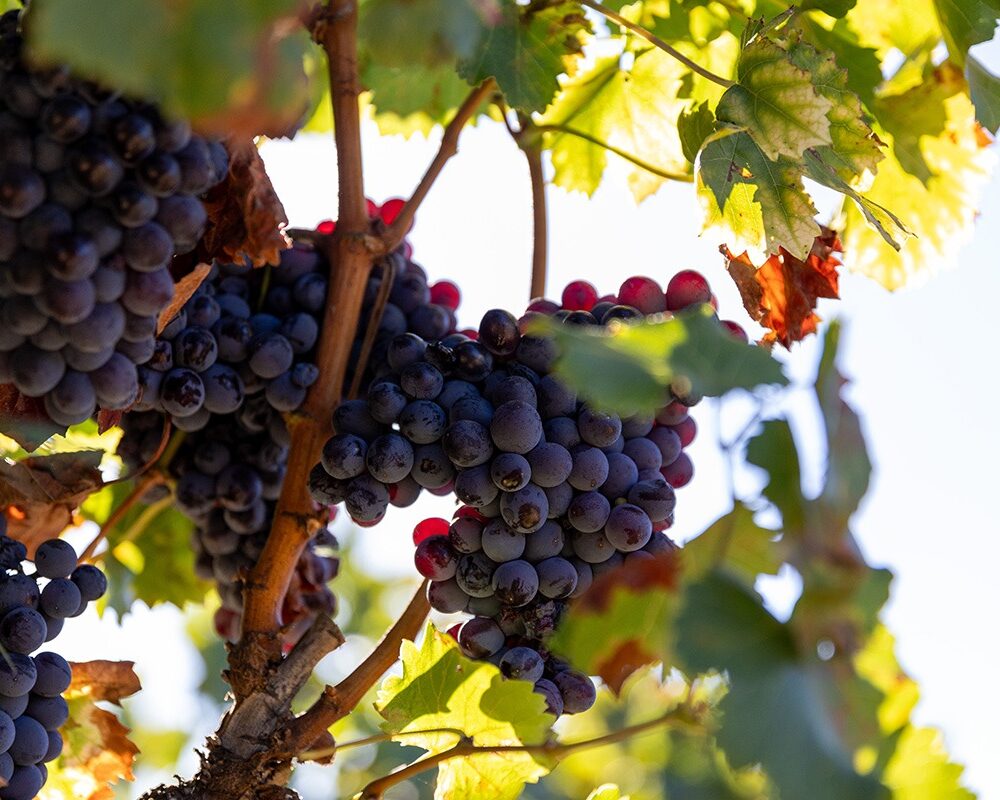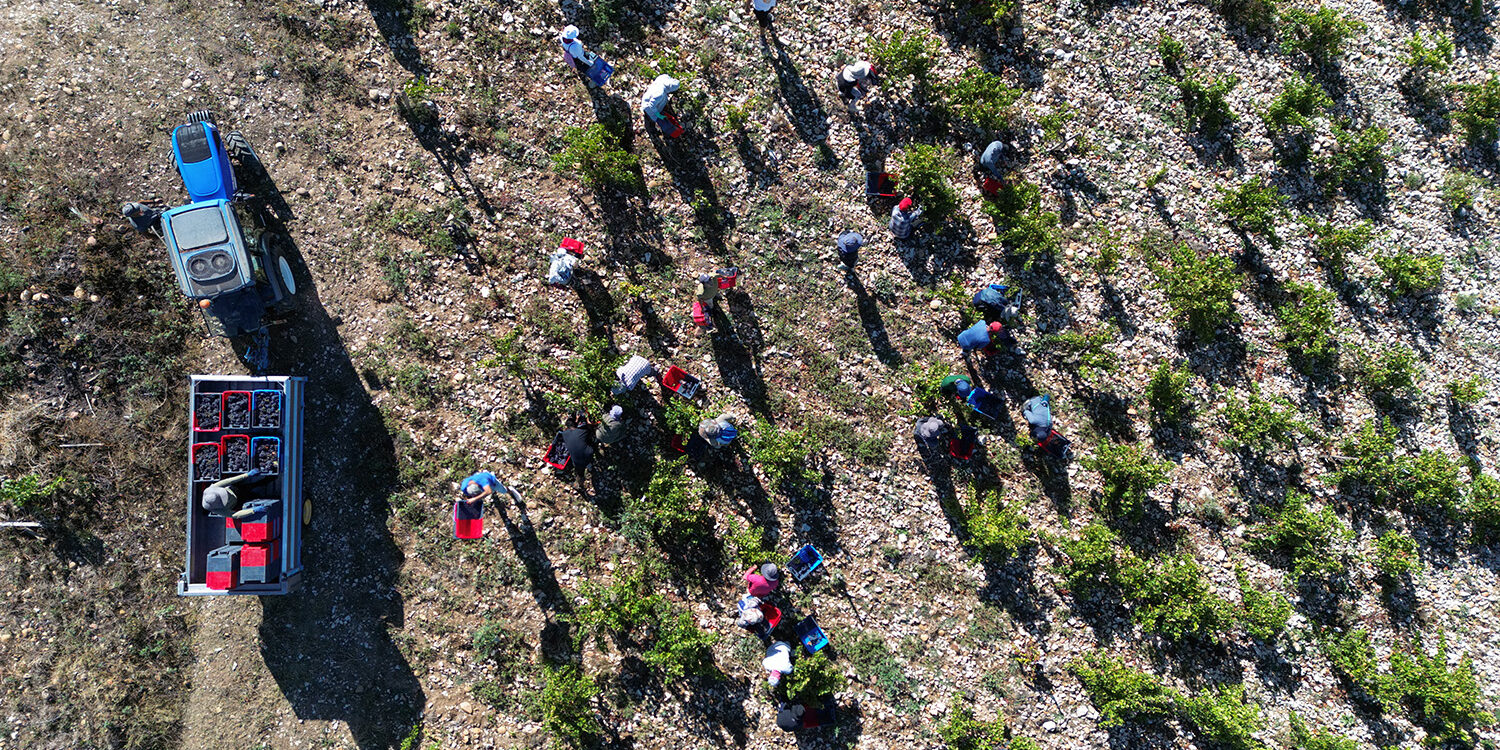1. Rétrospective
A year ago we set ourselves the target of reducing our annual electricity consumption by 10%. By switching to LED lighting at our production and winemaking sites, implementing ecogestures, lowering our heating and air-conditioning set points by 2°C and 1°C respectively, and insulating our cellars, we have exceeded this target with a significant 11.7% reduction in our electricity consumption. This represents 49,000 KW over one year, or the annual consumption of 3 four-person households of 100m2.
2. Winegrowing
After a very dry winter and early spring, heavy rainfall in May and June restored the vines’ water reserves, while relatively stable temperatures prevented coulure (flower abortion). Despite mildew and powdery mildew around flowering time, losses remained low thanks to the vigilance of our teams.
All these factors led to an abundant harvest.Then came a very dry summer from early July, which cleaned up the microclimates and allowed the vines to ripen their grapes well.
Very hot weather at the end of August caused some berry wilt, which we had to avoid at all costs. As a result, we had to be very careful, monitoring ripeness very closely and then sorting all the hand-picked grapes in the vineyard and on a sorting table in the cellar.
For our top-of-the-range qualities, the harvest was carried out in 12 kg boxes, enabling us to sort the grapes before selecting the berries using the «Cap Excellence» reception system.

3. Winemaking
The harvest was very spread out this year, with the first Syrah picked on 30 August and the last Grenache Noirs and Mourvèdres picked on 27 September. The Grenache Noir took a long time to ripen, both technologically and phenologically. Our teams of pickers had to stop for a few days to get to them… The 2023 vintage, still different from the previous one, was based on innovation and precision at Maison Brotte. A new, latest-generation de-stemmer enabled us to sort the grapes from 11 different plots, each with a different typicity specific to each terroir. As the acidity was fairly low, it was important to work the wines to obtain maximum freshness. Transporting and storing the harvest in a refrigerated lorry at 6°C facilitated cold pre-fermentation maceration to bring out more of the fresh fruit aromas. During alcoholic fermentation, extraction was controlled according to daily tastings, always gently by punching down the cap.
For the Château de Bord Côtes du Rhône Villages Laudun cuvée, the Syrah-Viognier grapes were not crushed in order to encourage what is known as «semi-carbonic» fermentation, which brings out the full aromatic complexity of the wine. As for the Grenache Noir, it reveals itself fairly quickly during maceration (25 days): elegant, greedy, round and deep.for the other parcellaires of Cairanne and Châteauneuf-du-Pape, we’ll have to wait a little longer, but they already look very promising.

4. Wine of the month
Châteauneuf-du-Pape – Secret Barville – 2020 (red)
The 2020 Châteauneuf-du-Pape Secret Barville is another fine, small-volume effort from this producer. Scents of ripe strawberries and raspberries are accented by touches of resinous pine and garrigue. It’s full-bodied but possesses very silky tannins, and the overall effect is one of delicacy and elegance. (RobertParker.com)








